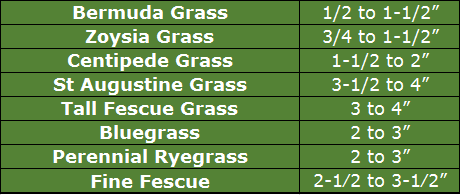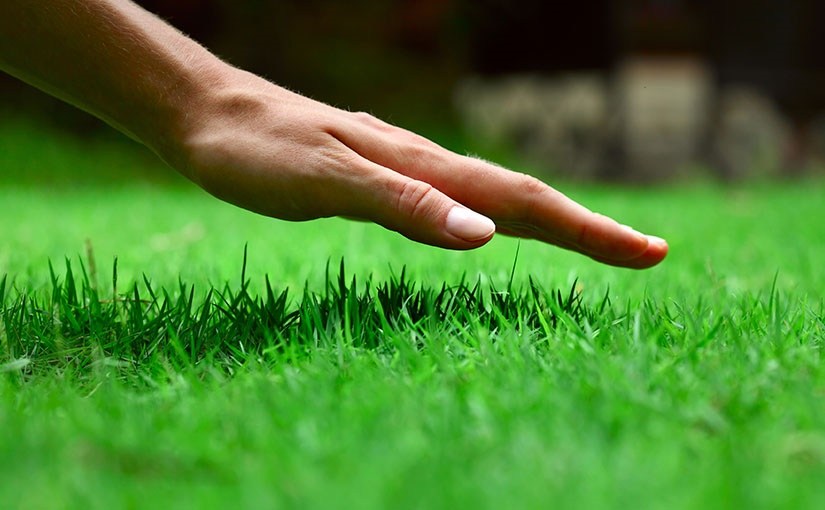Tips on How to Mow Your Lawn… And Why It’s Worth Your Time
Lawn mowing can be a boring, weekly chore. And when you’re busy working and raising a family, it’s just one more chore added to the honey-do list.Whether you’re new to homeownership or not, mowing your lawn can be a hassle—especially if you’re super-busy throughout the workweek.
But learning why lawn mowing is vital to the health of your turfgrass as well as picking up some hacks to make the job easier, you’ll find that it may just take some of the drudgery out of mowing the lawn.
First, why do you need to mow your lawn consistently?
- It’s more than skin-deep: Most homeowners take pride in how well their property looks. Likewise, your neighbors appreciate it when you cut your grass so it doesn’t grow too tall, trim your weeds, and make your home look tended.
- Most Importantly, it keeps turfgrass healthy. Your yard grass stays lush and green when it’s cut at the right length regularly, as this stimulates new grass growth and minimizes weeds.
Hack #1 – A Few Basics
First things firs,t let’s cover some lawn mowing basics. Here are a few quick tricks and “need to knows” of how to mow your lawn.
- You only mow based on the length of your grass.
- Cool season grasses need only the top third taken off per mow.
- Warm season grasses need between 1” to 2 ½” taken off the top depending on the type of warm season grass in your yard. (Remember, type of grass matters in how you mow!)

- Seasons affect how much and how often you mow. In spring and summer, you’ll mow more often due to the turf growing quickly.
- You also can take less grass off the top of cool season grasses during the spring and summer to shade the soil and control weeds.
Read more: How Often to Water Your Lawn? +12 Tips for Responsible Watering.
Hack #2 – Why You Don’t Mow a Wet Lawn
Unless you live in an area that gets a lot of rain, you should avoid cutting your yard grass when it’s wet. Instead, wait until you can walk across your lawn and not get your shoes wet.
Why is it bad to mow a wet lawn, you ask? A few reasons! Mowing wet grass is both labor-intensive for you as well as hard on your mower. Wet grass clumps together, clog up the blades and underneath your mower, as well as it doesn’t mulch well.
If you leave wet grass clippings laying on your damp lawn, you risk killing your turfgrass. Damp clippings will smother lawn grass.
Plus, wet lawn grass can flatten during a heavy storm. If you cut your grass while it’s still wet, you’ll be giving your yard an uneven cut. Some of the standing grass gets mowed while the flattened turf isn’t cut at all.
Finally, after a rainstorm, your soil is soft. If you already have ruts in your yard, you’ll make those ruts worse when mowing over soft soil. If you don’t have ruts, you’ll make them when you mow when the ground is still wet.
There is one caveat, however. If you live in an area where it rains a lot, such as Erie, Pa. or the Northwestern part of the U.S., you may need to compromise. Wait until your lawn is mostly dry and then mow your lawn.
You can find select mowers that can cut wet grass. They may cost more, but if it saves your lawn in the end, it’s well worth the investment.
Watch our Brinly-Hardy videos with our lawn care and garden attachments in action.
Hack #3 – Tips for Mowing Your Lawn
Now it’s time to get into the nitty-gritty of mowing your lawn. How do you mow? Here are some ideas to get you started:
- Always read the owner’s manual first. Know the different parts of your mower and how they work.
- Keep your mower blades sharp to get a clean cut. Dull blades tug, rip the yard grass, and sometimes can pull individual grass plants out of the ground.
- Before you start mowing, clean up your lawn first. You can use a yard sweeper or a rake.
- Put your mower setting to mulching.
- Raise the mower blades only to take the top third off the turf.
- Practice safety first with eye protection, closed-toe shoes, and earplugs.
- If you have a slope on your property, run your mower side to side rather than up and down the slope.
- If you use a push mower, make sure you’re going in a forward motion.
Hack #4 – When You Should Mow Your Yard
You might be thinking that cutting your grass is a tedious task. In a way, it is. But once you’re in a regular routine and you learn the nuances of your property, it’ll become second nature…And you’ll be on your way to a manicured lawn.
Early evening is the best time to mow your lawn. It’s cooler since the sun is going down. So, late-day mowing protects your yard from heat stress. It’s more comfortable for you too.
You can also mow in the late morning as long as the grass is dry and it’s before noon. From noon through 5 p.m., the sun is at its highest peak, making it stressful on your turf.
If you’re an early bird, you’re out of luck when the dew is heavy on the grass. As Hack #2 demonstrates, mowing wet grass isn’t good for your lawn grass or your lawn mower.
Learn more: Brinly-Hardy has lawn care and garden attachments to fit with the RYOBI Electric Mower.
Hack #5 – Take Care of Your Mower
If you want to keep your yard grass healthy with regular mowing, then you need to take care of your cutter too. You can do your own maintenance if you’re comfortable tinkering around a machine.
However, if you’re new to mowing, you may want to hire a professional to tune-up your mower.
Here are the basic steps to lawn mower maintenance:
- Read the owner’s manual. It should have a picture of your mower and its different parts.
- At the end of the season, empty out the gas. Old gas clogs up your mower and causes your mower to smoke when you turn it on for the first time in next spring.
- Check your oil and filter. If your oil is black and has debris visible, it’s probably time for an oil change. Likewise, you should change your oil filter once a year or sooner if it’s dirty.
- Clean underneath your mower. Take off the spark plug first. Then take a wire brush and scrape out the grass and the other gunk that is stuck there. Next, use your garden hose to clean out the rest of the grass clippings.
- Change your spark plugs every year.
- Sharpen your mower blade at the end of the season, so your mower is ready to go in early spring.
Hack #6 – If You Want to Save Time After Mowing, Invest in a Lawn Sweeper
A lawn sweeper will help you clean up your lawn before you mow. It’ll brush up sticks, stones, fallen leaves, and old grass. Since a yard sweeper has other uses on your property, it’s a sound investment.
Here are some other ways to use a yard sweeper:
- After a big storm rolls through your area, use the leaf sweeper to collect small twigs, leaves and other debris left by the wind.
- Go through your property before you mow your lawn. It beats using a rake on a hot summer evening.
- Use the lawn sweeper after you mow to pick up grass clippings.
- If you prune your trees and shrubs over the summer, a leaf sweeper can pick up leftover leaves and small sticks.
- The leaf sweeper works best on a dry lawn with lawn grass that’s not overgrown.
- You can also dethatch your lawn with a yard sweeper to keep it healthy.
Invest in Brinly Equipment to Take Your Yard to the Next Level!
At Brinly, we manufacture lawn care and garden attachments that make your life easier. Our lawn sweeper, for example, helps you “rake” a large lawn—saving you time and energy to do the things in life you enjoy doing.
Our lawn sweeper will even clean up thatch. We have two types of leaf sweepers:
- The 42” sweeper with dethatcher
- The 42” tow-behind.
You can find our lawn sweepers and our other products at these retailers.
Sources:
“8 Maintenance Tips to Keep Your Lawn Mower Running.”
“12 Tips to Get the Most Out of Your Lawn Sweeper.”
“How High Should Grass Be Cut?”
“How Soon Can You Cut Grass After It Rains?”
“How to Mow the Lawn – Lawn Mowing Tricks and Tips.”


